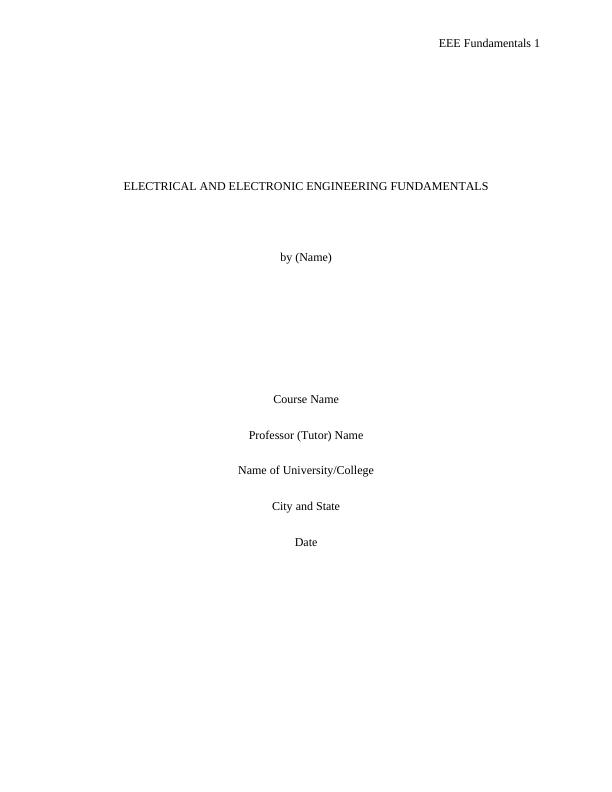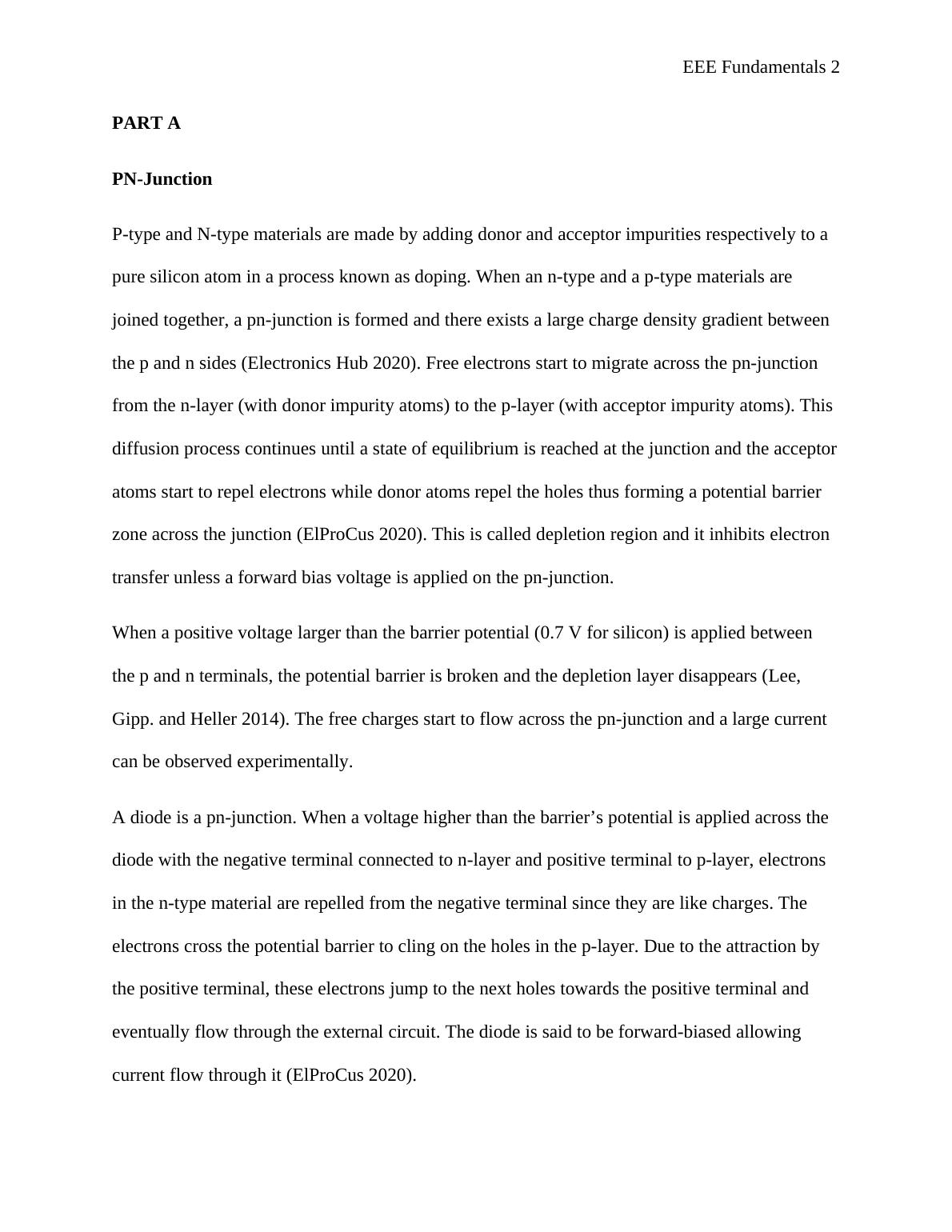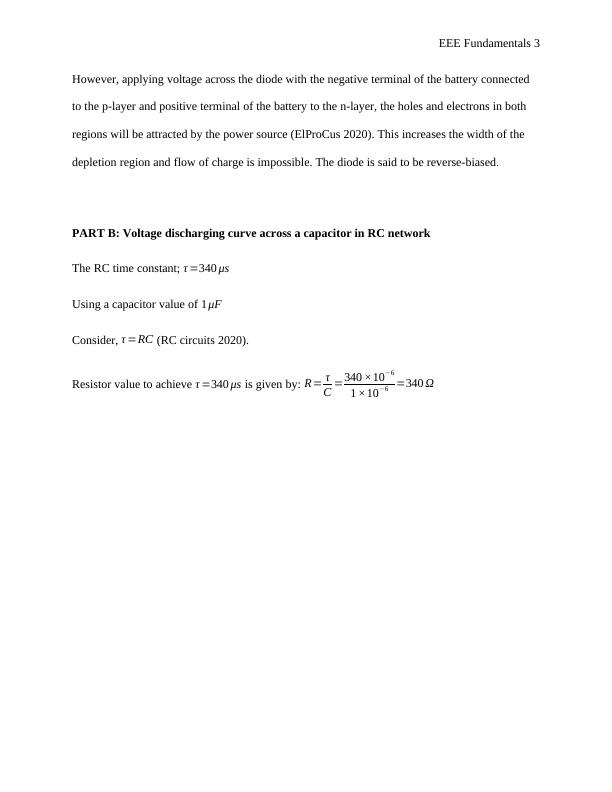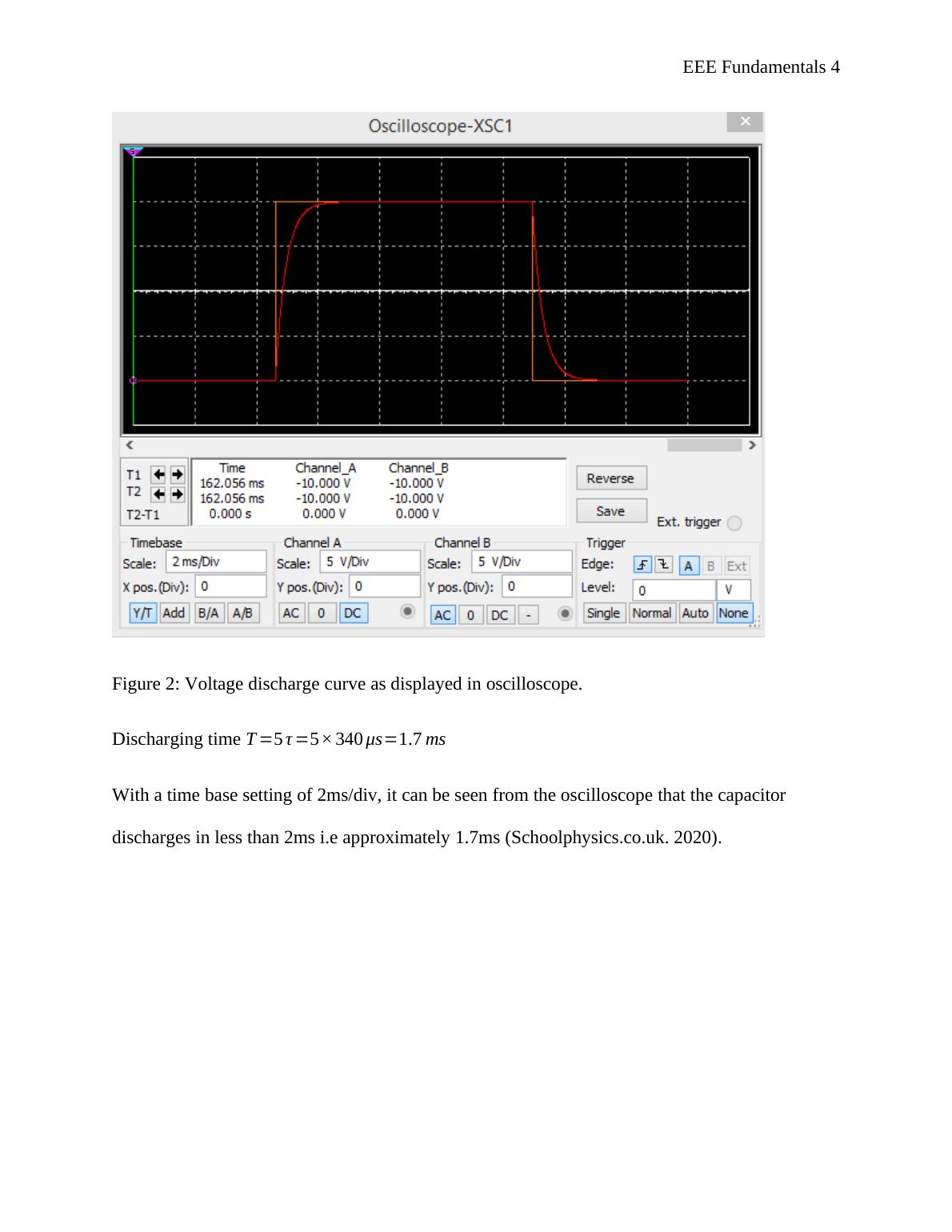Electrical And Electronics Engineering Fundamentals
20 Pages1774 Words40 Views
Added on 2022-08-08
About This Document
Hello, I need a different expert to write it in order to design the paper differently. We need to avoid plagiarism as much as we can.
Electrical And Electronics Engineering Fundamentals
Added on 2022-08-08
ShareRelated Documents
End of preview
Want to access all the pages? Upload your documents or become a member.
Desklib - Online Library for Study Material with Solved Assignments, Essays, Dissertations
|25
|2177
|288
Basic Electrical Principles: Circuits, Capacitors, Diodes, Magnetic Fields, and Transformers
|21
|2944
|314
Analogue Electronics Circuits
|20
|3349
|44
Analogue Electronic Circuits
|20
|3810
|98




